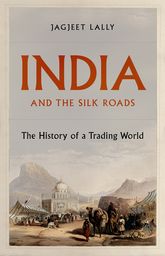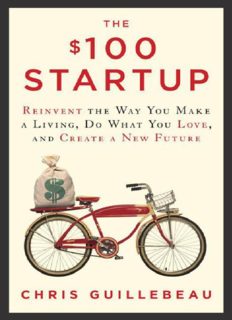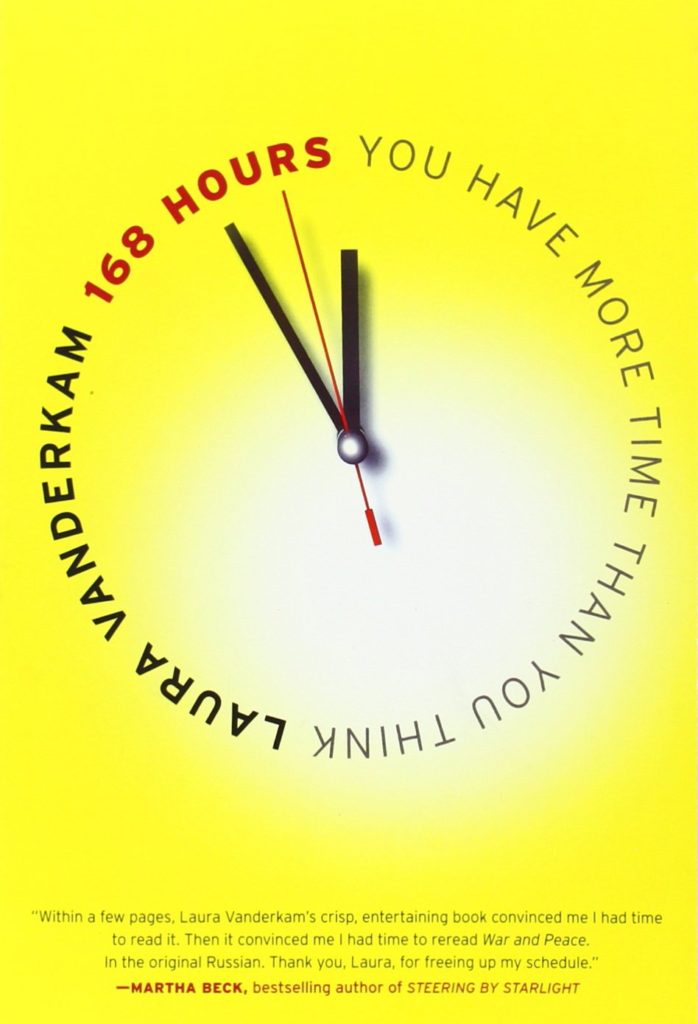موضوعات
آموزش و پرورش
ادبیات و زبان
پزشکی، دندانپزشکی و داروسازی
تاریخ و جغرافیا
داستان و رمان
دیگر
دین و فلسفه
روانشناسی
ریاضیات و آمار
سلامتی، تناسب اندام و رژیم غذایی
شیمی و پلیمر
علوم اجتماعی و حقوق
علوم زیستی و بیوتکنولوژی
فیزیک و نجوم
کامپیوتر و اینترنت
کتابهای کودکان و داستان
کسب و کار و اقتصاد
کشاورزی و دامپزشکی و غذا
معماری
مهندسی و فناوری
هنر و تئاتر
محصولات
ESUS AND JOHN WAYNE How White Evangelicals Corrupted a Faith and Fractured a Nation - Epub + Converted PDF
نویسندگان: خلاصه: INTRODUCTION ON A BITTERLY COLD DAY IN JANUARY 2016, Donald Trump stood on the stage of an auditorium at a small Christian college in Iowa. He boasted of his poll numbers and his crowd sizes. He warned of the dangers posed by Muslims and undocumented immigrants, and he talked of building a border wall. He denigrated American politicians as stupid, weak, and pathetic. He claimed that Christianity was “under siege” and urged Christians to band together and assert their power. He promised to lead. He had no doubts about the loyalty of his followers: “I could stand in the middle of Fifth Avenue and shoot somebody and I wouldn’t lose any voters,” he claimed.1 That morning, the Rev. Robert Jeffress, pastor of First Baptist Dallas, introduced Trump. As a pastor Jeffress couldn’t endorse a candidate, but he made clear that he wouldn’t be there if he didn’t think Trump “would make a great president.” Jeffress wasn’t alone. Already at that point, before the Iowa caucuses at the beginning of February, 42 percent of white evangelicals supported Trump—more than any other candidate. The reason was simple, Jeffress contended. Evangelicals were “sick and tired of the status quo.” They were looking for the leader who would “reverse the downward death spiral of this nation that we love so dearly.”The Forex trading course : a self-study guide to becoming a successful currency trader - Original PDF
نویسندگان: خلاصه: EXPERT, DEPENDABLE FOREX COACHING—UPDATED TO KEEP YOU AHEAD IN AN EVOLVING MARKET The Forex Trading Course is the systematic guide aspiring traders need to enter the market with the confidence and skills necessary to generate wealth. Masterfully written so both basic and complex concepts are readily accessible, this all-inclusive training tool outlines a practical course of action to develop strategies integrating fundamental and technical analysis. It also demonstrates how to identify high-probability patterns and trades, adjust your trading plan for different account sizes, use emotional intelligence to improve trading performance, and much more. This second edition is fully revised to address: • Changes brought about by quantitative easing and central bank intervention—including greater spikes and disruptions in the forex and the influence of global growth and inflation on the market • Using binary options with forex trades to make accurate predictions on direction, targets, and stops • Social media trading and how to navigate herding behavior and swarming patterns • The latest insights and trends in cryptocurrencies such as Bitcoin Complete with practice assignments to reinforce the material and a supplemental website to enhance your knowledge, The Forex Trading Course, Second Edition unlocks your optimal potential for profitable currency trading.India and the Silk Roads: The History of a Trading World - Original PDF
نویسندگان: خلاصه: India and the Silk Roads is a global history of a continental interior, the first to comprehensively examine the textual and material traces of India’s caravan trade with central Asia. But what was the fate of these overland connections in the ages of sail and steam? This book brings the world of caravan trade to life—a world of merchants, mercenaries, pastoralists and pilgrims, but also of kings, bureaucrats and their subjects in the countryside and towns. Their livelihoods did not become obsolete with the advent of ‘modern’ technologies and the consequent emergence of new global networks. Terrestrial routes remained critically important, not only handling flows of goods and money, but also fostering networks of trade in credit, secret intelligence and fighting power. With the waning of the Mughal Empire during the eighteenth century, new Indian kingdoms and their rulers came to the fore, drawing their power and prosperity from resources brought by caravan trade. The encroachment of British and Russian imperialism into this commercial arena in the nineteenth century gave new significance to some people and flows, while steadily undermining others. By showing how no single ruler could control the nebulous yet durable networks of this trading world, which had its own internal dynamics even as it evolved in step with global transformations, this book forces us to rethink the history of globalisation and re-evaluate our fixation with empires and states as the building blocks of historical analysis.Developing High Frequency Trading Systems: Learn how to implement high-frequency trading from scratch with C++ or Java basics - Original PDF
نویسندگان: خلاصه: Use your programming skills to create and optimize high-frequency trading systems in no time with Java, C++, and Python Key Features • Learn how to build high-frequency trading systems with ultra-low latency • Understand the critical components of a trading system • Optimize your systems with high-level programming techniques Book Description The world of trading markets is complex, but it can be made easier with technology. Sure, you know how to code, but where do you start? What programming language do you use? How do you solve the problem of latency? The Developing High-Frequency Trading Systems book answers all these questions. This practical guide will help you navigate the fast-paced world of algorithmic trading and show you how to build a high-frequency trading system from complex technological components, supported by accurate data. Starting off with an introduction to high-frequency trading, exchanges, and the critical components of a trading system, the book quickly moves on to the nitty-gritty of optimizing hardware and your operating system for low-latency trading, such as bypassing the kernel, memory allocation, and the danger of context switching. Monitoring your system’s performance is vital, so you’ll also get up to speed with logging and statistics. As you move beyond the traditional high-frequency trading programming languages, such as C++ and Java, you’ll learn how to use Python to achieve high levels of performance. And what book on trading would be complete without diving into cryptocurrency? By the end of this book, you’ll be ready to take on the markets with high-frequency trading systems. What you will learn • Understand the architecture of high-frequency trading systems • Boost system performance to achieve the lowest possible latency • Leverage the power of Python, C++, and Java to build your trading systems • Bypass your kernel and optimize your operating system • Use static analysis to improve code development • Use C++ templates and Java multithreading for super-low latency • Apply your knowledge to cryptocurrency trading Who This Book Is For This book is for software engineers, quantitative developers or researchers, and DevOps engineers who want to understand the technical side of high-frequency trading systems and the optimizations that are needed to get to ultra-low latency systems. Prior experience working with C++ and Java will help you grasp the topics covered in this book.The $100 Startup: Reinvent the Way You Make a Living, Do What You Love, and Create a New Future - PDF
نویسندگان: خلاصه: Chris Guillebeau is the New York Times bestselling author of The $100 Startup, The Happiness of Pursuit, and other books. Chris travels the world and writes for a small army of remarkable people at ChrisGuillebeaKilling Hope_ US Military and CIA Interventions Since World War II. Part 1-Zed Books Ltd (2003) - Original PDF
نویسندگان: خلاصه: Introduction A Brief History of the Cold War and Anti-communism Our fear that communism might someday take over most of the world blinds us to the fact that anti- communism already has. —Michael Parenti1 It was in the early days of the fighting in Vietnam that a Vietcong officer said to his American prisoner: "You were our heroes after the War. We read American books and saw American films, and a common phrase in those days was "to be as rich and as wise as an American". What happened?"2 An American might have been asked something similar by a Guatemalan, an Indonesian or a Cuban during the ten years previous, or by a Uruguayan, a Chilean or a Greek in the decade subsequent. The remarkable international goodwill and credibility enjoyed by the United States at the close of the Second World War was dissipated country-by-country, intervention-by-intervention. The opportunity to build the war- ravaged world anew, to lay the foundations for peace, prosperity and justice, collapsed under the awful weight of anti-communism. The weight had been accumulating for some time; indeed, since Day One of the Russian Revolution. By the summer of 1918 some 13,000 American troops could be found in the newly-born Union of Soviet Socialist Republics. Two years and thousands of casualties later, the American troops left, having failed in their mission to "strangle at its birth" the Bolshevik state, as Winston Churchill put it.3 The young Churchill was Great Britain's Minister for War and Air during this period. Increasingly, it was he who directed the invasion of the Soviet Union by the Allies (Great Britain, the US, France, Japan and several other nations) on the side of the counter-revolutionary "White Army". Years later, Churchill the historian was to record his views of this singular affair for posterity: Were they [the Allies] at war with Soviet Russia? Certainly not; but they shot Soviet Russians at sight. They stood as invaders on Russian soil. They armed the enemies of the Soviet Government. They blockaded its ports, and sunk its battleships. They earnestly desired and schemed its downfall. But war—shocking! Interference—shame! It was, they repeated, a matter of indifference to them how Russians settled their own internal affairs. They were impartial—Bang!4 What was there about this Bolshevik Revolution that so alarmed the most powerful nations in the world? What drove them to invade a land whose soldiers had recently fought alongside them for over three years and suffered more casualties than any other country on either side of the World War? The Bolsheviks had had the audacity to make a separate peace with Germany in order to take leave of a war they regarded as imperialist and not in any way their war, and to try and rebuild a terribly weary and devastated Russia. But the Bolsheviks had displayed the far greater audacity of overthrowing a capitalist- feudal system and proclaiming the first socialist state in the history of the world. This was uppityness writ incredibly large. This was the crime the Allies had to punish, the virus which had to be eradicated lest it spread to their own people. 6 The invasion did not achieve its immediate purpose, but its consequences were nonetheless profound and persist to the present day. Professor D.F. Fleming, the Vanderbilt University historian of the Cold War, has noted: For the American people the cosmic tragedy of the interventions in Russia does not exist, or it was an unimportant incident long forgotten. But for the Soviet peoples and their leaders the period was a time of endless killing, of looting and rapine, of plague and famine, of measureless suffering for scores of millions— an experience burned into the very soul of a nation, not to be forgotten for many generations, if ever. Also for many years the harsh Soviet regimentations could all be justified by fear that the capitalist powers would be back to finish the job. It is not strange that in his address in New York, September 17, 1959, Premier Khrushchev should remind us of the interventions, "the time you sent your troops to quell the revolution", as he put it.5 In what could be taken as a portent of superpower insensitivity, a 1920 Pentagon report on the intervention reads: "This expedition affords one of the finest examples in history of honorable, unselfish dealings ... under very difficult circumstances to be helpful to a people struggling to achieve a new liberty."6 History does not tell us what a Soviet Union, allowed to develop in a "normal" way of its own choosing, would look like today. We do know, however, the nature of a Soviet Union attacked in its cradle, raised alone in an extremely hostile world, and, when it managed to survive to adulthood, overrun by the Nazi war machine with the blessings of the Western powers. The resulting insecurities and fears have inevitably led to deformities of character not unlike that found in an individual raised in a similar life- threatening manner. We in the West are never allowed to forget the political shortcomings (real and bogus) of the Soviet Union; at the same time we are never reminded of the history which lies behind it. The anti-communist propaganda campaign began even earlier than the military intervention. Before the year 1918 was over, expressions in the vein of "Red Peril", "the Bolshevik assault on civilization", and "menace to world by Reds is seen" had become commonplace in the pages of the New York Times. During February and March 1919, a US Senate Judiciary Subcommittee held heatings before which many "Bolshevik horror stories" were presented. The character of some of the testimony can be gauged by the headline in the usually sedate Times of 12 February 1919: DESCRIBE HORRORS UNDER RED RULE. R.E. SIMONS AND W.W. WELSH TELL SENATORS OF BRUTALITIES OF BOLSHEV1KI— STRIP WOMEN IN STREETS—PEOPLE OF EVERY CLASS EXCEPT THE SCUM SUBJECTED TO VIOLENCE BY MOBS168hours : you have more time than y ou think - PDF
نویسندگان: خلاصه: Keep track of your time, hour by hour, for a week or two so you can see how you’re actually spending your time. One woman called it “one mortifying experience” when she realized how much time she was actually spending checking Facebook while at work and how often it derailed her from getting actual things done. Figure out what your core competencies are and spend your time doing those. What are you best at? Writing? Cooking? Nurturing relationships with our significant others and children (hopefully no one is better at that than you are . . . ). Maximize your time doing those things and minimize how much time you spend doing other things. Stop doing pretend work. Lots of us spend a lot of time being busy but doing things that aren’t actually that valuable. Are you spending a lot of time doing meaningless housework, or setting up elaborate organizational systems or having long conference calls that could be finished in ten minutes if you got right on task? Whether this is in your home life or your work life, you could probably get the “have to” things done a lot faster and more efficiently than you do. I basically always spend the entire two hours of nap and quiet time at my desk, but I often end up wasting so much time trying to multi-task between screens, doing fairly unimportant busy work (spending the last $15 on a gift card or trying to clear my inbox) that I end up having to work in the evenings too and then I feel like I spend all my time “working.” Since I finished this book, I’ve made a list each day of what I needed to get done and then I just put my head down and work, not getting distracted by the other maybe-should be things that don’t matter nearly so much or could get done later at a less focused time. Decide what you can off-load. She’s an enormous fan of outsourcing as much as possible, whether it’s laundry, grocery shopping, house cleaning, lawn care, etc. She argues that Pick 2-4 hobbies or activities you want in your life. You may be saying you want to sew more or read more books or volunteer with an organization you care about or run a marathon, but then you end up squandering your free time doing really low-investment things like watching TV (which is draining and not nearly as fun as you think it is). Figure out what you want to do and then when you can fit them in and make the happen. You’ll be rejuvenated by doing the things you’ve always meant to do and the lure of the Internet and TV will be reduced. She also says one of your hobbies really should/must be exercise. When you consider doing 30 minutes, 5 days a week, that’s only 3 hours out of your entire 168 a week. You can probably (almost certainly) fit it in. I love that she doesn’t argue that it’s easy to make it happen. It takes a lot of planning and discipline to make your life look like you want it to, instead of just piddling your life away running errands, checking email, and watching TV. And she has such an engaging writing style – I think she’s somewhat similar to Gretchen Rubin, with a lot of anecdotes, discussions about what she does well herself and also where she falls short, and an ability to make all sorts of data and statistics really engaging. There are certainly things I don’t agree with her on. I’m not willing to let my housekeeping slip to barely passable to get back a small chunk of time; I’m not the world’s best housekeeper by any means and the time I spend cleaning is fairly minimal, but I don’t keep things tidy because I care what other people think – I keep the clutter to a minimum because it makes ME crazy when there are piles of things on every surface. And she doesn’t seem to enjoy cooking like I do – yes, I could probably reduce the time I spend cooking by making easier meals or doing grocery delivery, but I’m not looking to outsource those things and I like to cook. And having been in schools, I totally disagree with her hypothesis that school lunches are way improved from days of old and that it’s well-worth having your kids just buy a lunch for a few bucks (also, having just read Slim by Design, I know that people who pack their lunches tend to eat more healthily than those who buy because you pack your lunch when you’re usually not terribly hungry (after dinner or breakfast) and so you make fairly good choices, whereas if you buy lunch when you’re starving, guess what you buy? Not salad).آیا کتاب مورد نظر هنوز بر روی سایت قرار نگرفته است؟ جای نگرانی نیست! کافی است بر روی گزینه سفارش کتاب کلیک کرده و درخواست خود را ثبت کنید. در کمتر از چند ساعت کتاب شما را آماده خواهیم کرد.









